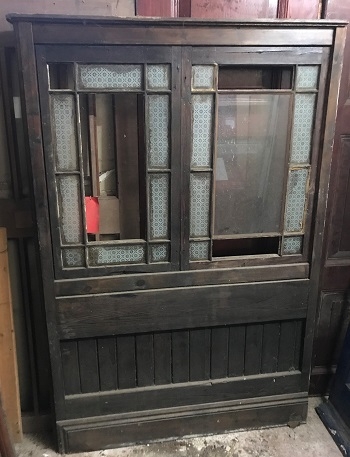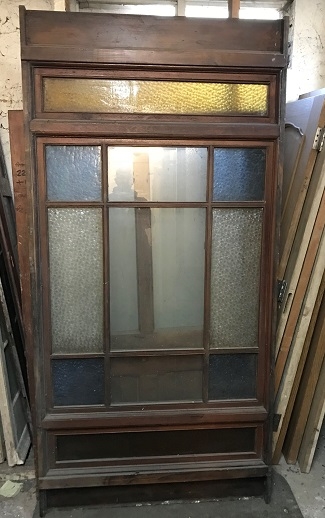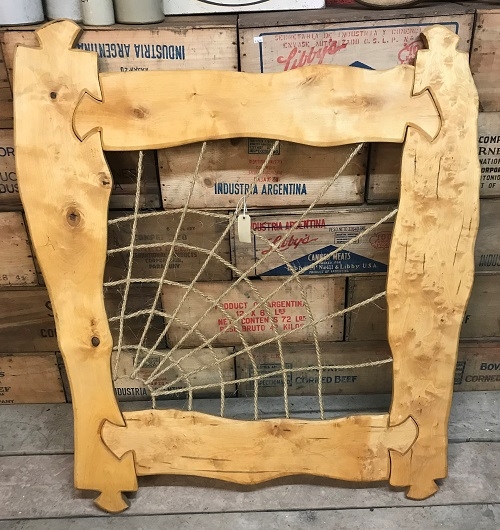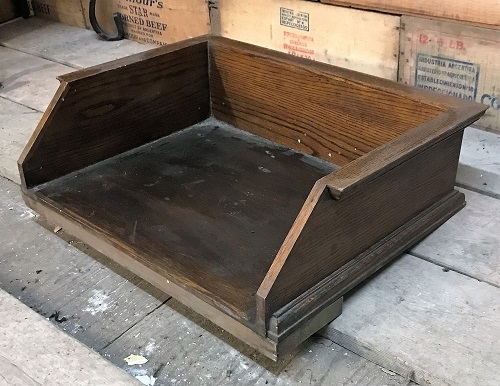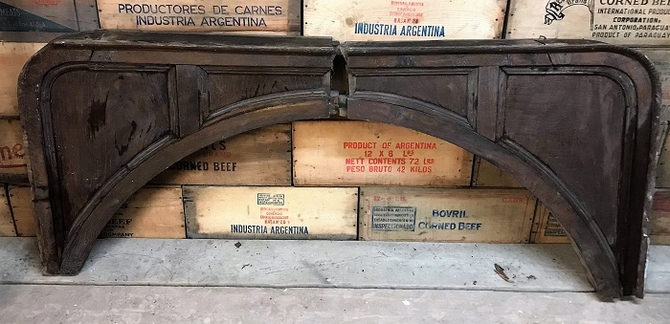- HOME
- ABOUT US
- BROWSE STOCK
- New Arrivals
- Reclaimed Railway Sleepers
- New Railway Sleepers
- Used Scaffold Boards
- New Scaffold Boards
- Fencing Supplies
- Cladding
- Architectural Features
- Antique Sanitary Ware
- Building Materials
- Roofing Materials
- Doors
- Fireplaces, Surrounds and Accessories
- Flooring
- Garden
- Gates, Railings and Finals
- Interior
- Ironmongery
- Lighting
- Radiators
- Shop and Pub Fittings
- Signs and Plaques
- Stained Glass
- Taxidermy
- Tiles
- Vintage and Retro
- Windows
- Clearance
Architectural Elements
Brackets and Corbels
Carved Wood
Columns and Pillars
Decorative Stone
Grilles and Gratings
Industrial
Panelling and Screens
Stair Cases and Stair Parts
Fire Baskets and Grates
Accessories
Basins
Baths
Belfast Sinks
Stands and Brackets
Taps and Showers
Toilets and Bidets
Towel Rails and Radiators
Beams and Reclaimed Timber
Chimneys
Copings
Guttering
Pavors
Stone Steps and Slabs
Reclaimed Bricks
New Imperial Bricks
Manhole/Inspection Covers
Combination Fireplaces
Insert Fireplaces
Surrounds,Overmantles and Hearths
Fireplace Accessories
Fireplace Tiles
Cast Iron Stoves
Fire Baskets and Grates
Carron Firerplaces
Benches
Birdbaths
Millstones
Gazebos and Arches
Lawn Edging
Miscellaneous
Urns and Planters
Staddle Stones
Statues and Ornaments
Water Features
Barrels
- BLOG
- WE BUY
- DELIVERY
- BASKET
- GALLERY
- CONTACT
Architectural Features » Panelling and Screens
Wood panelling first started to appear around the 15th Century. At this time it was known as wainscotting, and the wood panels, primarily of oak, served to make the interior of old stone buildings more comfortable, providing insulation and decoration to otherwise stark stone walls. Early panelling is invariably made of oak, but in the 17th and 18th centuries, deal and pine were also commonly used. The panelling was often painted or limewashed, the cheaper softwoods were also sometimes given a painted woodgrain finish to resemble more expensive oak. Early panelling typically incorporated sections of carved wood, especially linenfold patterns and geometric shapes, often diamond in form.Some of the most beautiful panelling comes from France, 17th and 18th Centuries, known as Boiserie. This panelling is usually very elegant and is often painted and gilded. Wood panelling has continued to be popular into the 20th Century, the Edwardians were very fond of having panelled billiards rooms and studies. English Salvage usually has a good selection of reclaimed panelling in oak, mahogany and softwoods, both British and Continental. Wood panelling is especially popular with designers for shop fittings, restaurants and bars, to create a traditional ambience, or to clad bar fronts or create dividers. Glazed screens, mostly 19th and 18th Century, are also used to create dividers in shops and bars, where transmission of light is important, these often incorporate sections of stained glass.
Reclamation Products
Next Previous Blog/News
posted in General Info on 20 December 2025
🎄Christmas 🎅 opening times 2025 🎉 Monday 22nd 8-4 Tuesday 23rd 8-4 Christmas Eve CLOSED Christmas Day CLOSED Boxing Day CLOSED Saturday 27th 9-2Monday 29th 9-4Tuesday 30th 9-4Wednesday 31st CLOSEDThursday 1st Jan CLOSED Friday...
posted in General Info on 3 August 2022
A cast iron fireplace is a lovely feature for a room, but they are costly things. If you are lucky enough to own a run-down old fireplace you can restore it yourself with a bit of hard work and patience. You could even buy an old fireplace from a rec...
posted in General Info on 29 January 2023
Pictures from the latest project of our friends at Crispin Creatives Landscape and Countryside SolutionsA greenhouse base made from reclaimed bricks and raised beds made from used scaffold boards all supplied from Ace Reclamation....
posted in General Info on 1 March 2025
The claim that raised garden beds are recommended for the elderly is true, but they are just as beneficial to anyone looking to grow their own plant life. Aside from the fact that they are easy to manage and maintain, and provide an easily accessibly...
posted in General Info on 18 August 2018
Below are some pictures courtesy of Wood Fired Piadizza Wimborne of what they achieved using used scaffold boards supplied from Ace Reclamation, looks really great guys......
posted in General Info on 8 August 2018
Of course when it comes to home and garden design, there are plenty of other advantages, such as the impressive rustic style that only reclaimed wood can provide. The fact that it's not very uniform in tone or texture is all part of its appeal and th...
posted in General Info on 14 July 2018
Here at Ace Reclamation we always like to try new things.So we took one of our whiskey barrels had it sand blasted which made it look amazing, then we gave it a couple of coats of oil for protection. Grabbed quiet a few 1 p pieces glued them to the t...
posted in General Info on 23 June 2018
Are good customers at Crispin Creatives kindly sent some pictures of one of their recent completed projects using A Grade Reclaimed Sleepers supplied by Ace ReclamationReclaimed Railway Sleepers are a great addition to any garden and for a great pric...
posted in General Info on 22 June 2018
Our Reclaimed Sawn Treated sleepers are back in stock by popular demand.A great compliment to any garden....
posted in General Info on 15 June 2018
Ace Reclamation has just taken delivery of 1000 used scaffold boards and 100 scaffold battens Get them why you still can ...
posted in Outdoor Ideas on 31 May 2018
We have just taken delivery of 156 quality Oak Whiskey Barrels from Scotland, and they are picking up a lot of interest, they are 89cm tall by 64cm wide, price is £ 70 for one, or 2 for £ 120Great for tables, garden features and planters.We can deliv...
posted in Outdoor Ideas on 23 May 2018
There are not many places in the world could beat this.A new customer kindly allowed us access to there latest project, a huge decking and undercover area. All of the used scaffold boards and cladding have been supplied by yours truly.Ace Reclamation...
posted in Outdoor Ideas on 16 May 2018
Our good customers at Kaleidoscape Landscaping kindly shared some pictures of a large retailing wall made from over 150 of New Untreated Oak Sleepers supplied by Ace Reclamation....
posted in General Info on 11 May 2018
A very good customer kindly shared pictures of his major garden project using our new untreated oak sleepers, so we thought we would share them to see what is available with a little time and money. Thanks Jerry for sharing the garden looks great.New...
posted in General Info on 30 April 2018
It is really great when customers share there projects.Our customer here has constructed 2 raised flower beds using Eco Treated Softwood Sleepers, and they look great.For all Railway Sleeper enquiries please call 01202 579222 or visit www.acereclamat...
posted in General Info on 23 April 2018
Busy this morning unloading this little lot.Over 300 of our new product Re-Sawn reclaimed railway sleepers, which retain the character of a traditional railway sleeper, but have been cut down to make them nice and square, and weigh a lot less than an...
posted in General Info on 21 April 2018
Jon from Jmworkshops kindly shared some pictures from this media wall he was commissioned to make for some customers. Jon came to Ace Reclamation because his customers wanted a driftwood feel to the unit, and Ace Reclamations driftwood cladding fitt...
posted in General Info on 1 April 2018
From the 1st April we will be trialing extending Saturday opening times till 4pm.So please come on down....
posted in General Info on 11 April 2018
Here are some pictures of Ace's exclusive driftwood cladding being installed in a new venue, looking great with the torched effect.The bar and toilets are the first areas to have it installed, still in the early stages, but will look great when finis...
posted in bespoke furniture on 29 March 2018
Another creation from one of our loyal customers Mike Vallance.Constructed using Eco Treated Sleepers 2.4m x 200 x 48mm and our feather edge boards, and topped off with some marble! thanks Mike for sharing the pictures. Looks good......
posted in General Info on 26 March 2018
Our Easter Opening Times are as follows;Good Friday 10am - 4pmEaster Saturday 9am - 4pmEaster Sunday ClosedEaster Monday 10am - 4pm...
posted in General Info on 14 March 2018
Our good customer Michael Villance purchased some dorset oak slabs for a garden project he had. He has kindly shared some pictures from start to finish. MIke's comments"Finally finished making the new top for the old table as you can see the old one ...
posted in General Info on 13 March 2018
Here at Ace we have managed to get hold of some amazing reclaimed timber, certain pieces stamped with New york city docks. This is recycled pine timber from ex ammunition boxes.Great piece of history, would make a great feature wall or floor.Please c...
posted in General Info on 5 March 2018
We have over 40,000 high quality Grade A Reclaimed Railway Sleepers available for immediate delivery to anywhere throughout the mainland UK.Our customers are saying they are the best quality sleepers they have seen.Prices start from £14.00 + VAT each...
posted in General Info on 1 February 2018
Thank you to our customers hatch marquee hire for sharing these great pictures showing what can be done using Ace Reclamations used scaffold boards....
posted in General Info on 19 January 2018
Ace Reclamation are proud to supply reclaimed timber cladding for the exterior of Wallgarden's fantastic range of playhouses. Please read below for the amazing opportunity to win your very own playhouse. COMPETITIONAs a celebration of our attendance ...
posted in General Info on 30 December 2017
In our opinion, there is no feeling more satisfying than installing a beautiful, natural oak product as the centrepiece of your living room to create an elegant and charming oak beam fireplace.However, there are many factors to consider before choosi...
posted in General Info on 29 December 2017
Handmade bricks are more expensive and are typically older and with much more character to them, they have a rough-textured surface and are lighter and softer than machine made bricks. There are myriad descriptions of a handmade brick, the common one...
posted in General Info on 16 December 2017
Due to unforeseen circumstances the yard will be closing at 1pm today only.Sorry for the inconvenience....
posted in General Info on 14 December 2017
Thank you to Jason Wilkins for sending in some pictures of his latest project using scaffold battens supplied from www.acereclamation.com also take a look at his youtube video https://youtu.be/WnBVmc7waNU completing the project.Some more pictures bel...
posted in General Info on 13 December 2017
A cheaper option for flooring are used scaffold boards, at a fraction of the cost of reclaimed floorboards you get a lot more coverage for your money.With a bit of DIY knowledge, time and money and elbow grease the results are great.Ace Reclamation s...
posted in General Info on 2 December 2017
One of our customers kindly shared with us what he created from our used scaffold boards, and a bit of DIY creativity.Firstly, Collect used scaffold boards from Ace ReclamationSecondly, Cut down the boards, make your frame, sand them down and finish ...
posted in Outdoor Ideas on 25 November 2017
Railways sleepers are one of the most versatile landscaping materials you can acquire for very affordable prices.There's no limit to the creative uses which they can be put to both in the garden and out. If you're overdue for a little project and you...
posted in General Info on 24 November 2017
An empty restaurant in Bournemouth is set to reopen under new ownership as a New Orleans-style venue.Mexican restaurant Coriander on Richmond Hill closed its doors in September after 30 years in business.Now, the building has been taken on by the own...
posted in General Info on 23 November 2017
A raised bed made from railway sleepers will be extremely strong and long lasting, with an attractive natural look. Our New Oak or Eco treated sleepers sized at 2400mm x 200mm x 100mm are great for the job. You can use them horizontally, or cut them ...
posted in General Info on 11 November 2017
Our good customers at The Tickled Pig Wimborne have kindly shared with us a picture of the new renovations, with use of our Ace Scaffold Boards for cladding, shelving and tables. the finished result looks Ace! Thank you...
posted in General Info on 3 November 2017
Artic load of 12,000 reclaimed bricks arriving cleaned and ready from salisbury property.We have over 80,000 reclaimed bricks in stock.Call for details or please check out our new website www.acereclamation.com...
posted in General Info on 2 November 2017
Spectacular reclaimed antique late Victorian cast iron chimneypiece in design, proportion and quality of casting. The deep bow fronted shelf sits above a breakfront cornice detailed with dentil mouldings, above a sweeping frieze decorated with finely...
posted in General Info on 30 October 2017
Here we have some pictures from a very good client, of what is possible with reclaimed timber cladding from Ace Reclamation.Whatever finish you are looking for it is always worth giving us a call....
posted in General Info on 24 October 2017
With the ever popular and growing demand for the use of our reclaimed timber being used to create feature walls and to clad retail displays, bars and counters we have searched the globe to source some very unique timber for this purpose. As with our ...
posted in General Info on 17 October 2017
Great use for our Reclaimed A Grade Sleepers. Over 100 of our sleepers have been turned into several pedestrian bridges.Thank You to our customer for sending in the picture....
posted in Outdoor Ideas on 13 October 2017
Arriving this week, two weathered Teak benches.Based on an original 1950 design from Sir Edward Lutyens.These will be shown in our benches section of our website as soon as they are here....
posted in General Info on 16 October 2017
Another load of 1200 used 3.9m scaffold boards and 2.4m Scaffold boards arriving at Ace Reclamation.Call 01202 579222 to order now....
posted in General Info on 8 August 2017
Another load of quality reclaimed sleepers arriving at the yard yesterday, with another five on there way.They are going fast, please call 01202 579222...
posted in General Info on 19 June 2017
What an end to a busy week here at Ace Reclamation 140 tonnes of sleepers arriving over 2 days ready for the summer, We thought we would share some pictures. ...
posted in Outdoor Ideas on 18 May 2017
Sleepers are hugely popular in the gardening world due to their vast array of uses and benefits. From their beautiful looks to their extremely high durability and lifespan, sleepers have the potential and the versatility to play a huge role in your g...
posted in General Info on 17 May 2017
Everyday we get enquiries from customers asking how to bolt together railway sleepers & large timbers. In the past we'd have mentioned coach bolts and pre-drilling, and socket sets etc.. NOW we always say "TIMBERCUT"TIMBERCUT - the hardsell... !- ins...
posted in Outdoor Ideas on 15 May 2017
We thought we would give out some cracking ideas for the garden this summer, non sleeper related! Scaffold Batten Retaining WallScaffold Board DeckingChunky Scaffold LoungerJust a few ideas we thought we would share!...
posted in Outdoor Ideas on 9 May 2017
Add character and warmth to any space with Ace Reclamation's new British, green, softwood sleepers. Incredibly versatile, sleepers have a huge range of uses, both practical and decorativeOur superb natural sleepers, often referred to as railway sleep...
posted in General Info on 27 April 2017
We are open 10am - 4pm during the bank holidays...
posted in Outdoor Ideas on 26 April 2017
We would love to hear from any of our customers past and present who would like to share there ideas with what they have done with our products, if you would like to email us pictures we will publish them on our website.Please email them to info@acer...
posted in General Info on 19 April 2017
We are glad to have supplied Electric Dreams with some ace sleepers, next stop the oscars...A PURBECK beauty spot is closed while filming takes place for a new sci-fi series featuring Breaking Bad star Bryan Cranston.Ace Reclamation have been happy t...
posted in General Info on 12 April 2017
Good Friday 10am - 4pmSaturday 9am - 2pmEaster Sunday - ClosedEaster Monday 10am - 4pm...
posted in Outdoor Ideas on 13 February 2017
Well, another one of our customers allowed to show you what can be done with some of our used scaffold boards. Project still ongoing but but this three tier decking is amazing, pool, hot tub and sauna all built in...Reclaimed scaffold boards make an ...
posted in Outdoor Ideas on 10 February 2017
One of our loyal customers who we recently delivered some more goods to kindly allowed us to photograph and share with you all, what he has managed to do with some of our reclaimed 13ft Scaffold boards, reclaimed telegraph poles, new oak sleepers and...
posted in General Info on 5 November 2008
http://www.bournemouthecho.co.uk/news/3820683.Open_Sesame___An_Aladdin_s_cave_revealed/" target="_blank"...
posted in bespoke furniture on 14 January 2017
So, you’re thinking New Year new furniture, well why not think about making it yourself.Using new or used reclaimed scaffold boards to make furniture is an excellent way of saving yourself money, giving you that creative feel, and sense of achievemen...
posted in Outdoor Ideas on 13 January 2017
So, you're thinking ofbuilding a retaining wall from railway sleepers? Maybe to terrace yourgarden or level out a slope? Maybe to hold back your neighbours creeping soil? Here is a selection of inspiring and wonderful retaining walls, madeboth from ...
posted in General Info on 12 July 2016
summer is finally upon on us??!!! we have been very busy in the yard assisting clients with architectural antiques for the upcoming festivalsamongst the varied and unusual requests this year, we were proud to supply Glastonbury festival with an arct...
posted in General Info on 19 December 2014
even if you dont have a traditional fireplace in your homelook what can be achieved with a blank wallbeautiful styling and a lovely cosy glow...
posted in General Info on 28 May 2015
AS SEEN ON TVs SALVAGE HUNTERS 2015 ON QUEST !!!!!!Forget high gloss and plastic look furniture for your interiors - Reclaimed and Salvage is where its at this year! Demand for our handmade bespoke furniture produced from our beautiful reclaimed sca...
posted in General Info on 2 October 2015
We are a family run business, being established over 35 years as one of the South of England's leading reclamation yards. Set on just over an acre and based in Hurn, Dorset, Ace Reclamation has always specialised in both demolition and reclamation le...
posted in General Info on 23 March 2016
Spring is upon us...Some of us are making plans or getting inspiration to change the garden,ready for hopefully a great summer...New oak of softwood sleepers are ideal for using in gardens and can be used for a variety of things. These sleepers aren'...
posted in General Info on 16 February 2013
A home wouldn't be complete without a stunning fireplace and there is nothing like a cast iron fireplace to enhance your living room, bringing warmth and elegance to your home. Hours are spent in front of a glowing fire during cold winter days and ni...
Mailing List
For latest news & products subscribe to mailing list


